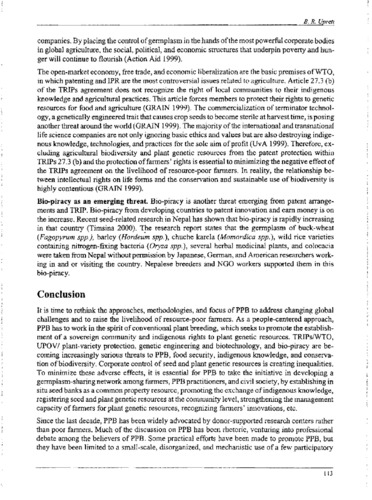Recent progress in cassava agronomy research in Indonesia
Cassava agronomy research, conducted by the Bogor and Malang Research Institutes for Food Crops and by Brawijaya University in Malang, as well as the status of cassava production in Indonesia are summarized. The annual growth of cassava production during the past seven years seems to keep pace with the increase in population, while the harvested area of cassava increased only 0.5% annually. Of the total cassava production, more than 70% is used for human food. Aside from being consumed as food, cassava is also used for industrial purposes. Therefore, the development of this crop should be in line with the development of other food crops and agro-industry.
Of the total cassava area planted in the country, more than 60% is harvested during June to October. Delaying the planting of both intercropped and monoculture cassava tends to give similar gross returns compared to that of planting in the early rainy season. In order to meet the year-round demand for cassava, the delayed planting time is promising. When cassava was planted in monoculture, the yield was positively correlated with rainfall during the first month, as well as with rainfall during the last 2-4 months before harvest.
Intercropping of cassava with other food crops or relay planting gave a higher gross return than that of monoculture cassava and therefore the intercropping system is more suitable for farmers with small land holdings, lack of capital and labor.
Under intercropping systems, plant height of cassava was positively correlated with the yield of cassava and was negatively correlated with the yield of interplanted crops. The total value of crops in these intercropping systems was affected by the kind of interplanted crops, their yield potential and the plant type of the cassava clones used, as well as by the rainfall distribution. Intercropping cassava with other food crops and the application of fertilizers reduced erosion by about 12% and 23% compared to that grown in monoculture or unfertilized, respectively. Erosion was also reduced about 20% by the planting of contour strips of elephant or setaria grass or hedgerows of Gliricidia sepium or Leucaena leucocephala on contour ridges.
NPK fertilization of both intercropped and monoculture cassava increased the total crop value significantly, while the return of plant residues improved the soil's condition. On-farm trials in Sulawesi showed that the use of improved varieties like W 1435-85 and Adira-4 with adequate fertilizers resulted in a benefit/cost ratio of 2.2-2.5 compared with only 0.8 for the traditional farmers' practice. The intercropping of cassava with upland rice, maize and /or grain legumes, each planted with optimum fertilization, is the most promising practice for sustainable cassava production.

